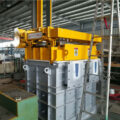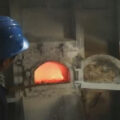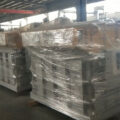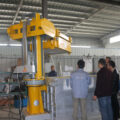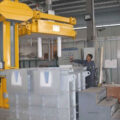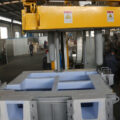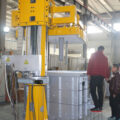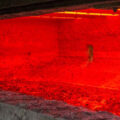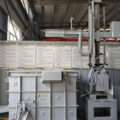How South Africa’s aluminum casting machine uses advanced molten metal rotary degassing rotors to reduce costs and improve metal quality.
In order to protect its position in the global automotive industry, South Africa’s aluminum casters must meet or even exceed the more demanding technical specifications to obtain better quality and cleaner metals. Technologies that can remove impurities from the melt are becoming increasingly important for foundries and are widely used throughout the industry. One of the most effective and therefore the most common technique used in foundries is molten metal rotary degassing system.
The quality of the metal in molten aluminum and aluminum alloys largely depends on the presence of impurities, usually dissolved hydrogen and solid non-metallic inclusions. As the metal cools, the dissolved hydrogen escapes from the solution and forms harmful pores. This porosity and non -metallic solid inclusions reduce the strength and disadvantages affect the final performance of castings made of aluminum.
Molten metal rotary degassing technology removes these undesirable components by bubbling gas, usually nitrogen, through molten metal. The gas is usually introduced through a degassing rotor, which reduces the size of the bubbles and disperses the nitrogen gas throughout the molten metal bath. As the generated bubbles rise through the molten metal mass, they absorb the hydrogen dissolved in the metal and remove it from the melt. In addition, non-metallic solid particles are swept to the surface to be removed by skimming.

Aluminum Die Casting Casters is located in South Africa and is a subsidiary of Die Casting Group, which uses aluminum alloy to produce auto parts. The melting is carried out in a 200 kW induction furnace, and the output is 350 Kg. The smelting process is designed to convert the flow channels and overflow in the production equipment into a liquid within a specific alloy specification to prepare for production. During the preparation process, the dross is removed from the molten aluminum feed and the feed is degassed with nitrogen to remove any hydrogen that may be trapped in the liquid metal.
Careful operation and maintenance can maximize the service life of the rotor.
- Proper care and maintenance are the key to maximizing the service life of the deaeration rotor.
- After the degassing is complete, remove the probe while nitrogen continues to flow through the probe to ensure that the channel remains unobstructed and to blow away all excess aluminum.
- After the probe has cooled slightly, use a wire brush to remove excess aluminum or scum on the probe, and then cool naturally.
- Coating the degassing probe regularly to aid the cleaning process, as it helps prevent aluminum and tin dross from sticking to the probe and prolongs its life.



